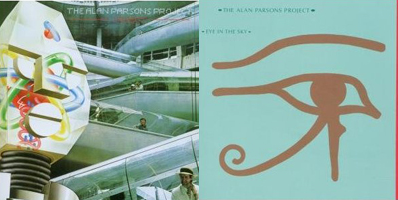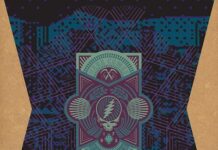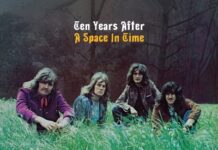As producer and sound shaper of various
Beatles and Pink Floyd albums, including Abbey Road and The
Dark Side Of The Moon, Alan Parsons probably knows everything about
the latest developments in high definition digital sound. And with that knowledge,
you would expect him to be overly keen on remastering and reissuing the rich
and diverse catalog bearing his own name to the highest standards possible.
At the moment, we can’t rejoice in a surround sound montage from The Alan
Parsons Project, but the first ten albums Parsons and singer/lyricist Eric Woolfson
made are getting the restoration red carpet treatment as sonically revamped,
expanded editions. As each release filters out over the coming months, two of
the most successful titles of the batch are available now: 1977’s I
Robot and 1982’s Eye In The Sky.
Based loosely on Isaac Asimov’s I, Robot, Parsons and Woolfson
aimed for the old human versus artificial intelligence concept on I
Robot, their second album together. The hits gave the record wings,
but the meticulous, almost orgasmic production ingrained a profound thump that
validated its place in the pantheon of well-structured, conceptual works of
art. The opening title track jumps out like a Pink Floyd stealth bomb, taking
your mind on a trip (headphones are highly recommended) before lightening up
with “I Wouldn’t Want To Be Like You,” sounding as delicious as
you can imagine. Different tones and shades for each and every track is the
idea — breezy acoustic guitars and orchestration for “Some Other
Time,” a funky rock beat for “Breakdown,” baroque melancholy
for “Don’t Let It Snow.”
Still, others like “Nucleus” zone in on the intuitive ear of Parsons
as a producer and engineer. “Total Eclipse” and “Genesis Ch.1
V.32” are thicker and denser as Parsons builds a hotbed of ethereal ambience
with a choir and orchestra. The expanded I Robot features five
additional tracks from Woolfson’s archive, mostly instrumental mixes of
original songs. The zip of “Boules (I Robot Experiment)” and Floydish
embroilment of “The Naked Robot” — both outtakes of the title
track — are sub-woofer wet dreams, force fields where no iPod would ever
dare to tread.
Five years later, Parsons and Woolfson unleashed Eye In The Sky,
a look at life under a watchful eye. The team of singers and musicians, which
includes Zombies’ vocalist Colin Blunstone and saxophonist Mel Collins,
are calculating and in sync as ever, although considerably less foreboding than
they were on I Robot. Consequently, Eye In The Sky
illuminates its subject in an engaging and sumptuous manner. The title track
is The Project’s biggest hit single, peaking at number three. It is proceeded,
in grand fashion, by “Sirius,” a swirling and ear-tingling instrumental.
The range isn’t too severe, as each sequence is smoothly executed and
mapped to the standard of the day, which, at the time, was insipid, sterile,
and overtly catering to the masses. That isn’t to say that “Silence And
I,” “Psychobabble,” “Mammagamma,” and “Old
And Wise” aren’t steaming with magical flourishes and dashes of brilliance
that deserve recognition. Taken as a whole — which is the only way you
can fully appreciate a record form The Alan Parsons Project — Eye
In The Sky is certainly worth looking into. But hold your applause
because the expanded edition has six extra songs made up of demos and outtakes.
Naturally, a couple of Parson’s long-form instrumentals made the grade.
“The Naked Eye” is a musical collage that combines riffs and bits
of each of the album’s songs. “Eye Pieces” is another collage,
this time with an orchestra and choir. It’s extras like these that provide
a fuller picture of the artist and his capabilities. Altogether, the reintroduction
of classic Alan Parsons Project albums provides a closer and more accurate examination
of a musical collective destined to leave a lasting imprint.
~ Shawn Perry




















